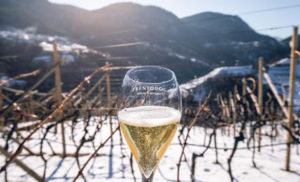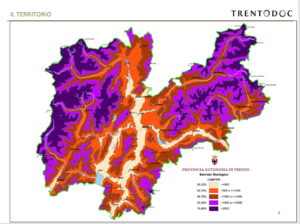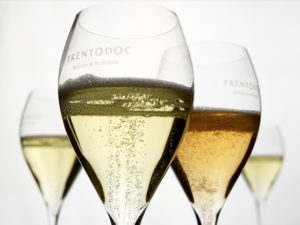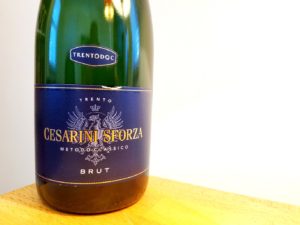What to Expect from a Trentodoc Sparkling Wine, and How They Compare to Other Traditional-Method Sparkling Wines
If you’re a traditional-method, sparkling-wine enthusiast, you’re likely familiar with Champagne, Cava and Franciacorta, but you may not have yet run into a Trentodoc Italian sparkling wine.

Photo Credit: Trentodoc,The Trentodoc appellation was the first DOC in Italy to be established for traditional-method sparkling wine in 1993
The Trentodoc appellation was the first DOC in Italy to be established for traditional-method sparkling wine in 1993 beating out Franciacorta DOCG’s traditional-method, sparkling-wine appellation establishment by two years in 1995.
[Prior to 1995 a Franciacorta DOC did exist but it was inclusive of both still and sparkling wine.]
In terms of volume Franciacorta DOCG is the heavy-weight when it comes to Italian, traditional-method sparkling wine (typically referred to “Metodo Classico” in Italy) with 1.5 million cases of sparkling wine produced annually versus 775,000 cases in Trentodoc.
So, Trentodoc is Italy’s traditional-method, sparkling-wine underdog.
Trentodoc Name Explained

Photo Credit: Trentodoc, Located in Northern Italy amidst the mountainous Italian Alps, Trentodoc wines are produced from vineyards within the Trentino DOC where 70% of the land is over 1,000 meters (3,000 feet) above sea level.
If you’re wondering why I’m referring to the appellation as “Trentodoc” versus “Trento DOC”, you’re not alone; I had the same question.
“Trentodoc” is the appellation’s branded, shortcut trademark (created in 2007) for marketing wines from the region, even as the region could also technically be referred to as “Trento DOC” though you’ll rarely see it referred to that way on bottles.
Prior to gaining its own traditional-method, sparkling-wine appellation status in 1993, Trentodoc was part of the larger Trentino DOC from which it still sources grapes.
Located in Northern Italy amidst the mountainous Italian Alps, Trentodoc wines are produced from vineyards within the Trentino DOC where 70% of the land is over 1,000 meters (3,000 feet) above sea level.
Trentodoc Grapes & Styles

Photo Credit: Trentdoc, Trentodoc wines can only be made from four grape varieties – Chardonnay, Pinot Noir, Pinot Bianco and Pinot Meunier – and can be either white or rosé.
Trentodoc wines can only be made from four grape varieties – Chardonnay, Pinot Noir, Pinot Bianco and Pinot Meunier – and can be either white or rosé.
Sparkling wine from Trentodoc comes in one of three styles:
- Brut, with at least 15 months of aging on its lees
- Millesimato, with at least 24 months of aging
- Riserva, with at least 36 months of aging
How Trentodoc Sparkling Wines Compare to Other Traditional-Method Sparkling Wines
In terms of taste, you’ll find Trentodoc sparkling wines are characterized by their freshness.
This contrasts with Champagne which can often be characterized by its yeastiness, and Cava which can often be characterized by caramel and hot-rubber-band notes.
It’s helpful to understand what to expect from a Trentodoc sparkling wine so you can serve and pair it appropriately such as with sushi, cheese, fish, poultry and other dishes that complement the wine’s acidity.
There are currently 63 Trentodoc producers with the three largest being Ferrari, Cavit and Mezzacorona.
In wine shops in the U.S. I most often see Ferrari and Rotari, though you can also find Trentodoc wines from smaller producers within the region such as from Cesarini Sforza which I sampled recently.
In terms of price, you’ll typically fine Trentodoc sparkling wines around $25.
In terms of value for a traditional-method sparkling wine given other alternatives on the wine-store shelf, Trentodoc wines are a bit on the expensive side compared to some other New-World, traditional-method sparkling-wines.
However, the wines are worth trying, especially if you can get your hands on a Millesimato and Riserva.
Plus, who doesn’t want to root for Italy’s traditional-method, sparkling-wine underdog?
Cin-cin!

